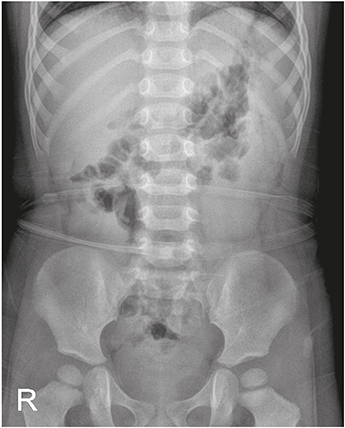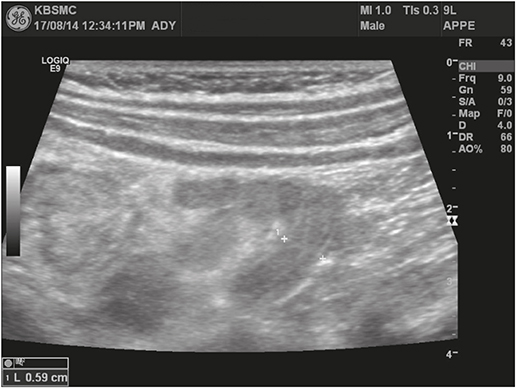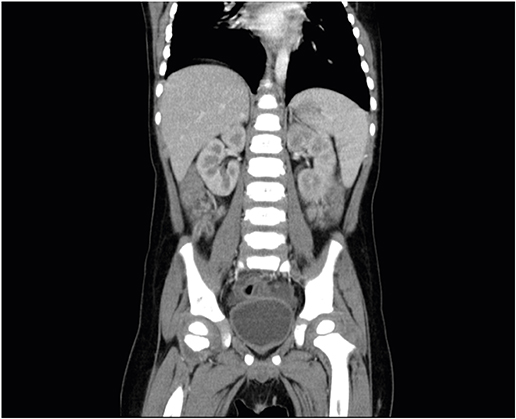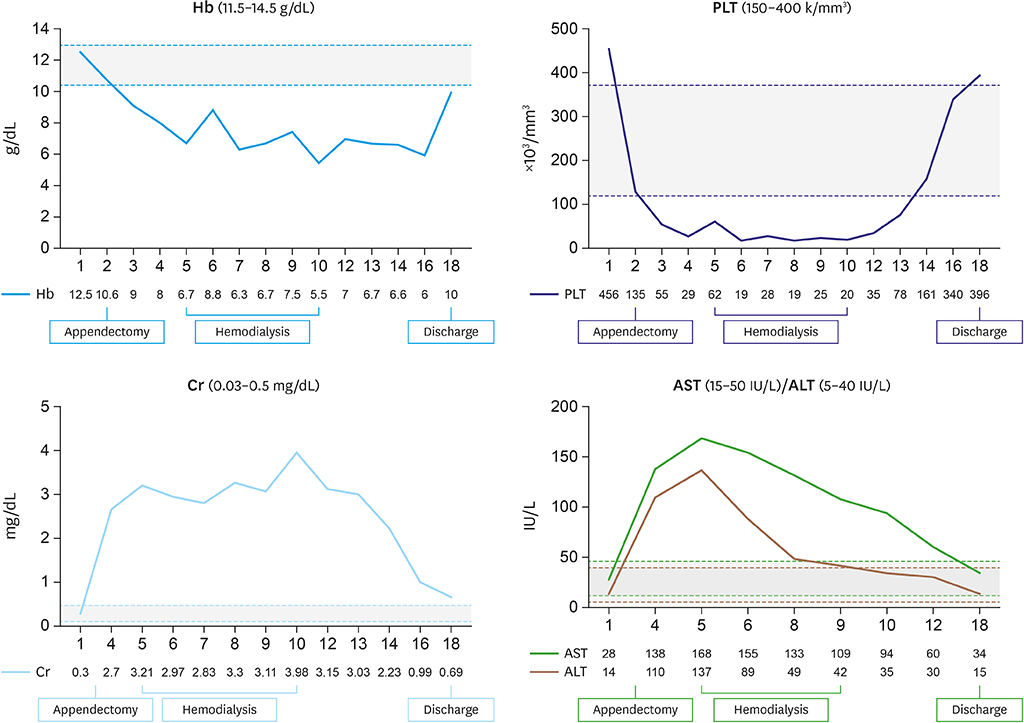Adv Pediatr Surg.
2019 Jun;25(1):29-34. 10.13029/aps.2019.25.1.29.
A Case of Hemolytic Uremic Syndrome after Appendectomy
- Affiliations
-
- 1Department of Pediatrics, Kangbuk Samsung Hospital, Sungkyunkwan University School of Medicine, Seoul, Korea. jiheehihi.kwak@samsung.com
- KMID: 2451066
- DOI: http://doi.org/10.13029/aps.2019.25.1.29
Abstract
- Hemolytic uremic syndrome (HUS) is associated with consumption of under cooked gound beef, characterized by triad of renal failure, microangiopathic hemolytic anemia and thrombocytopenia. Early recognition of this disease, maintenance of fluid balance and proper dialysis seems to prevent acute mortality. A 23-month-old boy was admitted with abdominal pain, bloody diarrhea and fever. On hospital day (HD) #2, he developed aggravated abdominal pain compared to the initial assessment. Contrast abdominal computed tomography demonstrated findings suggestive acute appendicitis so the patient was underwent laparoscopic appendectomy. On HD #3 and #4, his laboratory findings showed marked thrombocytopenia and serum creatinine elevation. He was transferred to another hospital for dialysis with the impression of acute renal failure. Later, verotoxin-producing Escherichia coli, which is one of the most common causes of HUS, was detected on his initial stool examination. HUS can present with prodromal gastrointestinal symptoms mimicking acute abdomen. So even if the patient is primarily diagnosed acute abdomen in the initial setting, clinicians should always keep in mind of other fatal conditions disease, such as HUS. To our knowledge, this is the first case report of acute appendicitis followed by HUS in South Korea.
Keyword
MeSH Terms
Figure
Reference
-
1. Boyer O, Niaudet P. Hemolytic uremic syndrome: new developments in pathogenesis and treatment. Int J Nephrol. 2011; 2011:908407.
Article2. Gerber A, Karch H, Allerberger F, Verweyen HM, Zimmerhackl LB. Clinical course and the role of shiga toxin-producing Escherichia coli infection in the hemolytic-uremic syndrome in pediatric patients, 1997–2000, in Germany and Austria: a prospective study. J Infect Dis. 2002; 186:493–500.3. Verweyen HM, Karch H, Brandis M, Zimmerhackl LB. Enterohemorrhagic Escherichia coli infections: following transmission routes. Pediatr Nephrol. 2000; 14:73–83.4. Siegler RL. Hemolytic uremic syndrome in children. Curr Opin Pediatr. 1995; 7:159–163.
Article5. Cimolai N, Anderson JD, Bhanji NM, Chen L, Blair GK. Escherichia coli O157:H7 infections associated with perforated appendicitis and chronic diarrhoea. Eur J Pediatr. 1990; 149:259–260.6. Fenton SJ, Kastenmeier A, Pysher TJ, Nichol PF. Acute appendicitis in a patient with hemolytic uremic syndrome: an unusual clinical scenario. Pediatr Surg Int. 2008; 24:439–441.
Article7. Volinsky JB, Karrer FM, Todd JK. Hemolytic-uremic syndrome caused by Escherichia coli O157:H7 after perforated appendix. Pediatr Infect Dis J. 1998; 17:846–847.
Article8. Bell BP, Goldoft M, Griffin PM, Davis MA, Gordon DC, Tarr PI, et al. A multistate outbreak of Escherichia coli O157:H7-associated bloody diarrhea and hemolytic uremic syndrome from hamburgers. The Washington experience. JAMA. 1994; 272:1349–1353.
Article9. Ross A, LeLeiko NS. Acute abdominal pain. Pediatr Rev. 2010; 31:135–144.
Article10. Razzaq S. Hemolytic uremic syndrome: an emerging health risk. Am Fam Physician. 2006; 74:991–996.
- Full Text Links
- Actions
-
Cited
- CITED
-
- Close
- Share
- Similar articles
-
- A clinical aspect of the hemolytic uremic syndrome
- A Case of the Diarrhea-associated Hemolytic Uremic Syndrome Developing Simultaneously with an Acute Appendicitis
- A Case of Microangiopathic Hemolytic Anemia after Myxoma Excision and Mitral Valve Repair Presenting as Hemolytic Uremic Syndrome
- Delayed Hemolytic Uremic Syndrome Presenting as Diffuse Alveolar Hemorrhage
- Hemolytic-Uremic Syndrome






